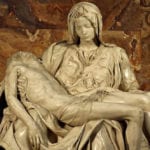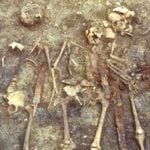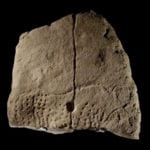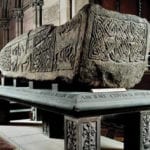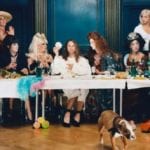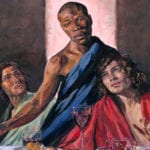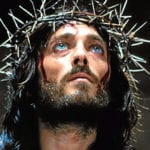 Our World
Our World  Our World
Our World  Weird Stuff
Weird Stuff 10 Fascinating Facts You Might Not Know About Snow
 Miscellaneous
Miscellaneous Top 10 Things Crypto Was Supposed to Change & What Actually Did
 History
History 10 Huge Historical Events That Happened on Christmas Eve
 Music
Music 10 Surprising Origin Stories of Your Favorite Holiday Songs
 History
History 10 Less Than Jolly Events That Occurred on December 25
 Weird Stuff
Weird Stuff 10 Funny Ways That Researchers Overthink Christmas
 Politics
Politics 10 Political Scandals That Sent Crowds Into the Streets
 Weird Stuff
Weird Stuff Ten Bizarre Facts About The Doge Meme
 Our World
Our World 10 Ways Your Christmas Tree Is More Lit Than You Think
 Our World
Our World 10 Archaeological Discoveries of 2025 That Refined History
 Weird Stuff
Weird Stuff 10 Fascinating Facts You Might Not Know About Snow
 Miscellaneous
Miscellaneous Top 10 Things Crypto Was Supposed to Change & What Actually Did
Who's Behind Listverse?

Jamie Frater
Head Editor
Jamie founded Listverse due to an insatiable desire to share fascinating, obscure, and bizarre facts. He has been a guest speaker on numerous national radio and television stations and is a five time published author.
More About Us History
History 10 Huge Historical Events That Happened on Christmas Eve
 Music
Music 10 Surprising Origin Stories of Your Favorite Holiday Songs
 History
History 10 Less Than Jolly Events That Occurred on December 25
 Weird Stuff
Weird Stuff 10 Funny Ways That Researchers Overthink Christmas
 Politics
Politics 10 Political Scandals That Sent Crowds Into the Streets
 Weird Stuff
Weird Stuff Ten Bizarre Facts About The Doge Meme
 Our World
Our World 10 Ways Your Christmas Tree Is More Lit Than You Think
10 Archaeological Relics From The Life Of Jesus Christ
Whether Jesus of Nazareth was the son of God is a question of faith. But there’s almost no dispute that he was a real person who lived through history.
It’s hard to find proof of the real man who lived 2,000 years ago. Every year, though, we slowly unearth bits and pieces of the historical Jesus’s life and get an amazing glimpse into what it would have been like to follow him on his travels.
10 Jesus’s Childhood Home
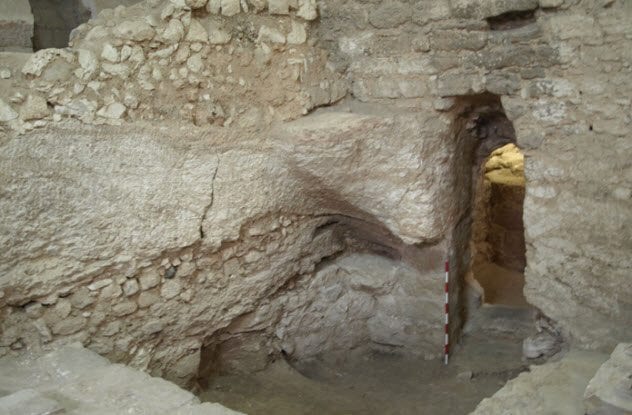
Jesus was raised in a mortar-and-stone home cut into a rocky hillside. His hometown was Nazareth, a town where people held tightly to their Jewish faith. Today, their homes are the sites of archaeological digs, which have given us glimpses into how the people in Jesus’s neighborhood lived.
He and his neighbors filled their homes with distinctly Jewish possessions. For example, they had bowls made of limestone and chalk, which were meant to keep food pure to follow Jewish traditions. Most of the neighboring towns had embraced more Roman customs.
During the Byzantine era, one house in the area was turned into a shrine by people who believed that it was Jesus’s childhood home. Although we can’t prove that they were right about the specific house, we do know which type of house and which neighborhood Jesus lived in as a child.
9 The Ossuary Of James, Brother Of Jesus

Jesus had four younger brothers: James, Joseph, Simon, and Judas. According to the Jewish historian Josephus, James met his end when the Jewish high priest sentenced him to be stoned to death. As was the custom for Jews at that time, James’s bones were buried in a stone box called an ossuary.
Following the custom, James’s ossuary was engraved with “James, son of Joseph.” After his father’s name, though, James’s inscription has etched into it an unusual extra point of pride: “brother of Jesus.”
Not everybody agrees that the ossuary is real. Oded Golan, the man who discovered the ossuary, was even brought to court on forgery charges, but he was found innocent. That doesn’t necessarily prove it’s real, but his defense proved that the inscription wasn’t made by Golan and may have been made 2,000 years ago.
8 The Bones Of John The Baptist
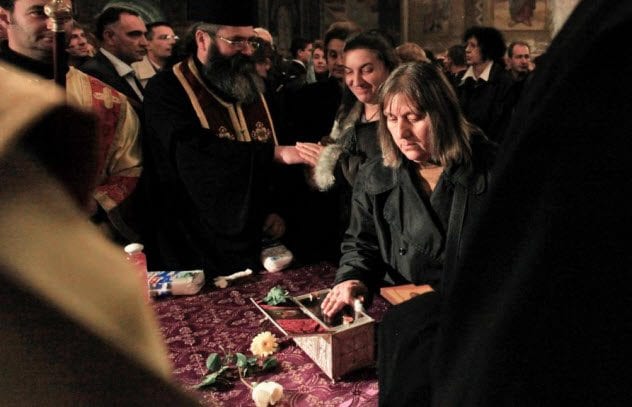
After leaving Nazareth, Jesus was baptized by John the Baptist. It’s a moment in his life that most historians agree really happened. John the Baptist was a real person whose life is corroborated by other sources. In fact, we may even have his remains.
They were uncovered in the ruins of a Bulgarian church on an island called “St. John” in Bulgarian. Beneath a church altar, there was a small marble sarcophagus. Inside were a knuckle, a tooth, and a few scattered bones taken from the body of a Middle Eastern man. Radiocarbon testing shows that he died during the time of Christ.
Bulgaria is a long way for John the Baptist’s bones to travel, but it’s believed that he made his way there in a small box found nearby. Inside is a message mentioning John the Baptist’s name and asking God to “help your servant Thomas” as he carried the bones of the man who baptized Jesus to be displayed across Europe.
7 The Synagogue In Mary Magdalene’s Hometown
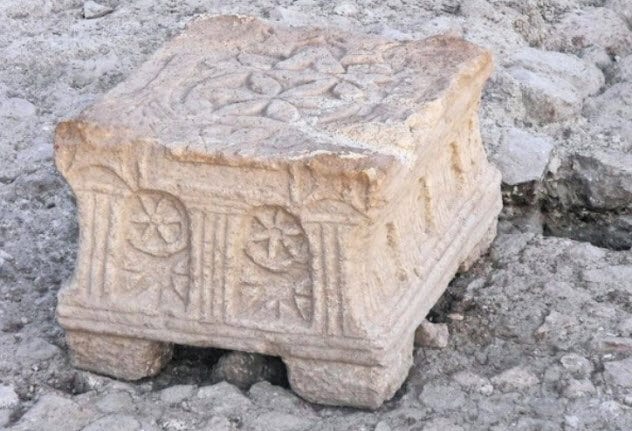
When Jesus started preaching, he talked to people in Jewish synagogues. At least, that’s what the Bible says. But for a long time, historians thought that the word “synagogue” was just a bad word choice. Until recently, they hadn’t found any proof that Jewish synagogues existed in Jesus’s time and figured that Jesus really went into people’s homes.
Now, though, we’ve found a synagogue from Jesus’s time in Magdala, the hometown of Mary Magdalene. It’s a large building built to fit 200 people. It has a mosaic floor, walls decorated in colorful frescoes, and a stone block in the middle with a menorah on it. There is a chamber for public readings of the Torah, another for private study and storage, and bowls outside the building for the ritual washing of hands.
It’s possible that Jesus preached to people in that very synagogue.
6 A Pagan Temple In The Hometown Of Five Apostles
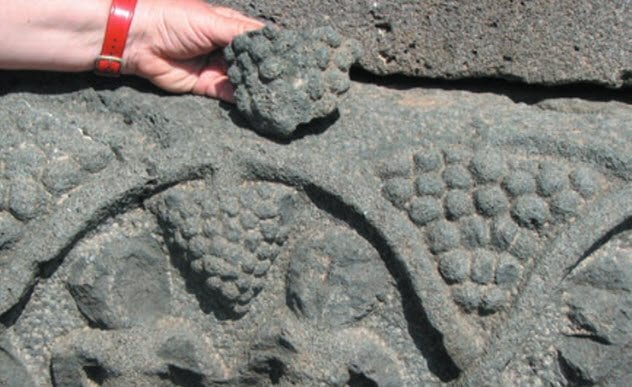
Not every Jew in Jesus’s time went to synagogue. In a town called Bethsaida, where Jesus is said to have met five of his disciples, archaeologists have found a temple dedicated to the Roman gods which contains a terracotta figurine of Emperor Augustus’s wife Livia.
According to Flavius Josephus, the town was renamed in her honor after her death. Still, it couldn’t have sat well with the Jewish people living there.
Archaeologist Rami Arav believes that this may explain some stories from the Bible. Jesus may have found so many willing apostles in Bethsaida because they were fed up with watching their neighbors embrace the Roman gods.
It may also explain why Jesus cursed the town, saying, “Woe to you, Bethsaida! For if the miracles had occurred in Tyre and Sidon which occurred in you, they would have repented long ago in sackcloth and ashes.”
5 A Fishing Boat In Galilee
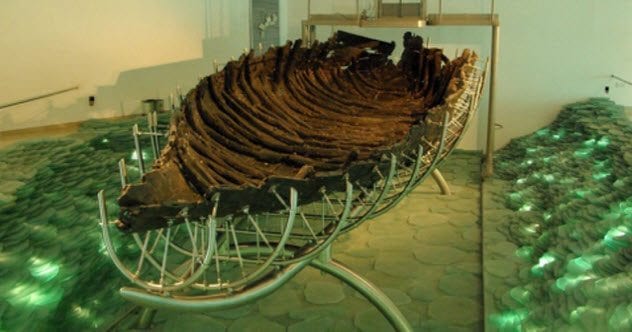
After leaving Bethsaida, the Bible says that Jesus went to a town called Dalmanutha. Based on homes and other artifacts found by archaeologists, Dalmanutha seems to have been a wealthy fishing town. Jews and pagans lived side by side there, each following their own beliefs.
The beaches are designed to land fishing boats. According to the Bible, Jesus climbed aboard one of these boats when he left the town. We’ve found one of the boats from Jesus’s time not too far from the town.
The boat is designed for fishing in shallow waters. It has a nearly flat bottom with a net kept on the stern deck. It was pieced together from old junked boats, patched up, and repeatedly repaired before it finally gave in and sank to the bottom of the sea.
4 Herod’s Palace

Jesus’s death sentence was set in a trial held at Herod’s palace, prosecuted by the high priest Caiaphas, and overseen by the Roman prefect Pontius Pilate. The group met in the courtyard in an area called “the Pavement,” which archaeologists think they’ve found.
Today, Herod’s palace is covered by the modern Tower of David Museum and a medieval prison. It was found when workers tried to expand the museum and discovered an old abandoned building under the floor.
The palace is a whole complex. One part called Jaffa Gate fits the description of the Pavement where Jesus’s trial was held.
3 A Stone Dedicated By Pontius Pilate
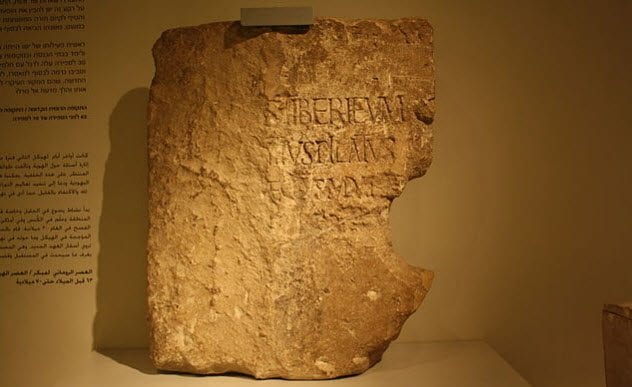
Pontius Pilate was a real person. Years after sentencing Jesus to death, he built a sports stadium and dedicated it to Emperor Tiberius. Before the stadium, Pilate placed a stone slab that is shattered today but on which we can still read the words, “To the divine Augusti Tiberieum . . . Pontius Pilate . . . prefect of Judea . . . has dedicated this.”
The slab tells us something about the real Pilate. First, his veneration of Emperor Tiberius is unusually celebratory. Tiberius generally didn’t accept the level of divination that Pilate offers him on this slab.
It also tells us Pilate’s rank and suggests that Pilate viewed himself as a military man. From Flavius Josephus, we know that this became his fate. Pilate led a cavalry against a Samaritan insurrection and put their leaders to death. There, Pilate was violent enough that he was charged with committing a massacre and had to give up his place in Judaea.
2 The Caiaphas Tomb
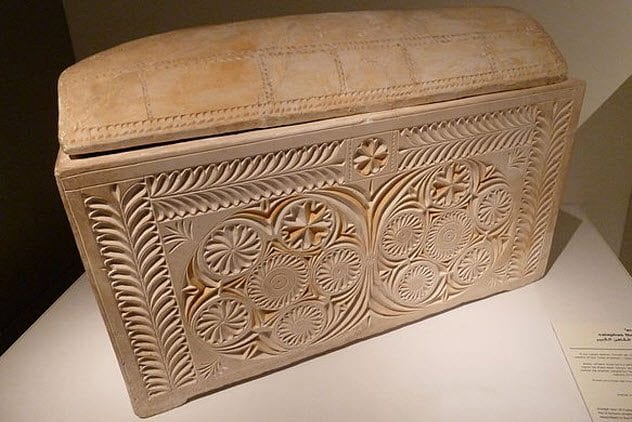
The Jewish high priest Caiaphas, who presided against Jesus, lived to age 60. When Caiaphas’s time came, his bones were brought out to his family tomb and cached inside a cave on the outskirts of Jerusalem where he was buried with 11 of his family members.
Caiaphas was placed in a lavishly decorated ossuary upon which his full name was inscribed: “Joseph, son of Caiaphas.” Flavius Josephus also uses that name to describe Caiaphas. His tomb was buried and forgotten for centuries until workers widening a road in 1990 broke through by pure chance.
One ironic coincidence was revealed in his tomb. Caiaphas named his son, Yeshua, the Hebrew name for Jesus.
1 The Remains Of A Crucified Jew
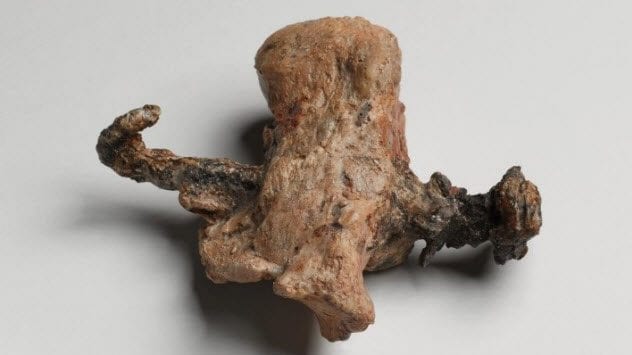
Nobody has ever found Jesus’s body. However, we have found the remains of a Jew named Yehohanan who met the same fate. It’s a rare discovery—few crucified remains have been found. Through Yehohanan, we can see how brutal the last moments of a person’s life were when crucified on a cross.
Yehohanan’s heel bone still has the iron stake driven through it. However, his hands are untouched, suggesting that they were tied to the cross instead of nailed. Most importantly, though, he was buried inside an ossuary, proving that victims of crucifixion were allowed to have burials and supporting the biblical story that Jesus was buried after his death.
It’s doubtful that we’ll ever find the body of the historical Jesus. Even if we did, there would be no way to prove that it was really his body. However, we do have bits and pieces from every part of his life—tiny hints that Jesus was really once here.
